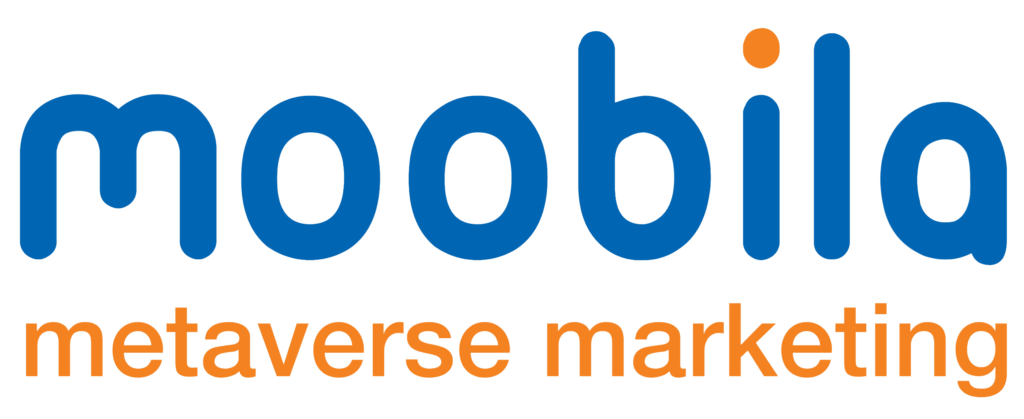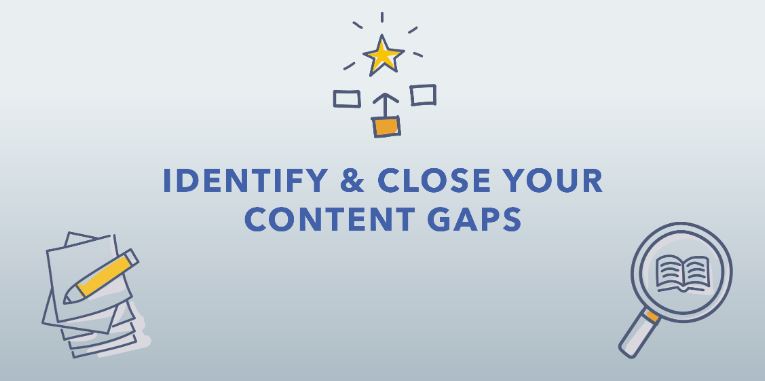Businesses are 13 times more likely to see ROI on their content strategy with a plan than without. In fact, even 65% of businesses struggle to create appealing content on a regular basis. The culprit? Content gaps.
The Content Gap Analysis is a strategic approach meant to find out the differences between your current content and that of which users are looking, essentially what you should write about. Content Pillars are like the North Star for your content strategy: they keep you from building whatever, whenever, and instead create what exactly your audience wants.
Of course, we’re not here to talk about simple content gap analysis. And so today, we’re exploring the deep end of Content Gap Analysis: Advanced. With a method that integrates competitive analysis, audience understanding, and content planning across major themes, this is something game-changing for your strategy!
At Moobila, we know how valuable advanced content gap analysis is. That is why we provide leading services and resources to make this process as smooth as possible and help you take your content strategy from good to great.
ALT Text: Content Gap Analysis
What is a Content Gap?
In content strategy, a content gap is the space between what your audience wants to know and what you are giving them. It is the missing element in your content puzzle, and once you add it, it will skyrocket both your audience engagement & SEO performance.
Types of Content Gaps
- Topic Gaps: These are subjects or angles your audience is interested in but your content doesn’t cover. A fitness blog with excellent content on workout routines might lack some serious information about post-workout nutrition, for instance.
- Keyword Gaps: These occur when your competitors rank for valuable keywords that your content doesn’t target. This could mean you’re missing out on significant organic traffic.
- Format Gaps: If your content strategy relies heavily on blog posts, but your audience prefers video content or infographics, you’re facing a format gap.
- Depth Gaps: Sometimes, you might be covering the right topics but not in enough detail. If your audience craves in-depth, comprehensive content and you’re only providing surface-level information, that’s a depth gap.
The Cost of Content Gaps
Ignoring content gaps can be costly. You risk missing out on valuable SEO opportunities, experiencing lower engagement rates, losing potential conversions, and ultimately, frustrating your audience. In today’s competitive digital landscape, these missed opportunities can significantly impact your bottom line.
Importance of Content Gap Analysis
SEO Powerhouse
Advanced content gap analysis is a goldmine for SEO opportunities. This can help you determine which keywords your competition is benefiting from, making it possible to create a strong case for Google around the same phrases. This targeted approach can greatly boost your search engine rankings as well as conventional traffic.
For example, a content gap analysis may uncover that your competitor is ranking well for sustainable packaging solutions – what you failed to include as a term. Creating detailed, well-written content on this Keyword allows you to potentially rank for some of that precious search traffic.
Audience Satisfaction
Identifying and addressing content gaps is crucial to satisfying the needs of your readers. Comparing your result, you will have more engagement when they spend more time on the site, less bounce rate and conversion is higher because you are giving the user only stuff he was looking for.
It is simple: if someone can google all of his / her matters, he/she could see your homepage often as a relevant reference. This trust, in turn, results in brand loyalty and, hence, conversions.
Competitive Advantage
At that level, advanced content gap analysis has moved beyond merely keeping up with the Joneses to being able to see what specific opportunities might allow you to not only catch your competitors but hit them over the head. This is how you can find out those gaps and leverage them to become the industry’s best resource by comparing them with other competitive articles.
Also Read:
How to Do a Content Gap Analysis: A Step-by-Step Guide
- Identify Your Competitors: Look beyond your direct business rivals. Consider thought leaders, industry influencers, and even tangentially related businesses that might be capturing your audience’s attention. Tools like SpyFu or SEMrush can help you identify your digital competitors.
- Analyze Competitor Content: Use SEO tools like SEMrush, Ahrefs, or Moz to dive deep into your competitors’ content strategy. Analyze:
- Their top-performing keywords
- Content types (blogs, videos, podcasts, etc.)
- Social media engagement
- Backlink profiles
- Pay special attention to content that’s performing exceptionally well. What topics are resonating with their audience?
- Audit Your Own Content: Be brutally honest about where your content falls short. Use the same tools to analyze your own content performance. Look for:
- Keywords you’re not ranking for
- Topics you haven’t covered
- Content formats you’re not utilizing
- Areas where your content depth might be lacking
- The Gap Matrix: Create a visual representation of where your content overlaps with or falls short of your competitors. This could be a simple spreadsheet with topics/keywords on one axis and competitors (including yourself) on the other. Mark where each competitor has content, highlighting areas where you’re lacking.
- Prioritize Your Gaps: Not all gaps are created equal. Prioritize based on:
- Search volume: How many people are looking for this information?
- Relevance: How closely does it align with your business goals and audience needs?
- Competition: Is this a gap you can realistically fill and compete in?
- Business impact: Which gaps, if filled, would most directly impact your bottom line?
Advanced Content Gap Analysis Techniques:
Voice of the Customer (VoC) Data: Go beyond SEO metrics and tap into what your audience is actually saying. Use:
- Customer surveys
- Social media listening tools
- Analysis of customer reviews and feedback
- FAQ and support ticket analysis
This data can reveal content needs that might not be apparent through traditional keyword research.
Topic Modeling: Leverage AI-powered tools like MarketMuse or Clearscope to identify trending topics and emerging keywords in your industry. You can stay on top of things with the aid of these tools, creating content for topics before they become oversaturated.
Content Freshness Audit: Regularly assess if your existing content needs updating. Content gaps can emerge over time as information becomes outdated. Set up a schedule to review and refresh your cornerstone content pieces to ensure they remain relevant and comprehensive.
Case Studies: Content Gap Analysis Success Stories
- E-commerce Fashion Retailer “StyleHub”: Challenge: Struggling to compete with larger retailers in organic search results. Solution: The advanced content gap analysis template revealed opportunities in long-tail keywords related to style advice and sustainable fashion. Result: Created a series of in-depth style guides and sustainable fashion content, leading to a 45% increase in organic traffic & a 22% boost in conversion rates over 6 months.
- B2B Software Company “CloudTech Solutions”: Challenge: High bounce rates and low engagement on product pages. Solution: SEO gap analysis uncovered a lack of in-depth technical content compared to competitors. Result: Developed a comprehensive resource center with whitepapers, case studies, and video tutorials. We saw a 60% decrease in bounce rate and a 35% increase in demo requests within three months.
FAQ: Your Content Gap Questions Answered
1. What’s the difference between basic and advanced content gap analysis?
The basic content gap meaning focuses on identifying missing keywords compared to your competitors. The advanced analysis goes deeper, incorporating audience insights, emerging trends, content formats, and even your own content’s freshness.
2. How often should I conduct a content gap analysis?
Ideally, you should revisit your content gap analysis at least quarterly. However, in rapidly changing industries or if you launch new products/services, more frequent analysis might be necessary.
3. Do I need specialized tools for content gap analysis?
While some tools (like SEMrush, Ahrefs, or BuzzSumo) can be incredibly helpful, you can start with a manual analysis using competitor research, keyword research tools, and audience feedback.
4. What if I identify too many content gaps? How do I prioritize?
Focus on the gaps that align with your overall business goals & have the highest potential impact. Consider factors like search volume, relevance to your target audience, and your competitors’ performance.
5. Can I use content gap analysis for content types other than blog posts?
Absolutely! Content gap analysis is applicable to all types of content, including videos, infographics, podcasts, social media posts, and even product descriptions.
6. How does content gap analysis relate to content audits?
Content audits evaluate your existing content’s performance and quality, while a content gap analysis template helps you discover what content you’re missing. Together, they provide a complete picture of your content strategy.
7. Is content gap analysis only for SEO?
While it’s a powerful SEO tool, content gap analysis also informs your overall content strategy, assisting you in producing content that engages readers and encourages interaction.
8. Does Moobila offer any resources to help with SEO content gap analysis?
Yes! Moobila provides content marketing services to streamline your content gap analysis process and uncover valuable insights. Visit Moobila to learn more.
Conclusion
Instead, advanced content gap analysis is a strategic necessity for serious businesses to master the cornerstone of all great digital marketing — better practices in web-based business. Systematically uncover and fill content gaps;
- Boost your SEO performance
- Enhance audience engagement and satisfaction
- Gain a significant competitive advantage
Content Gap Analysis Is A Never-Ending Process. Even if you fill the current gaps in your industry, as it changes and competitors adapt to this reality, new vacancies will always arise. Be prepared, stay focused, and keep the content strategy refreshing.
Are you prepared to fill the hole in your content and become a dominant force within your niche? Try some of Moobila’s content strategy products and resources. Visit moobila.com today and discover yourself as a full-stack developer!!



